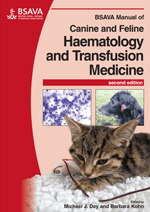
Full text loading...

Until recently most veterinary practitioners in the UK and other European countries would have considered the risk of transmitting haemoparasites by a blood transfusion to be remote. Unfortunately the risk is now very real, vector-borne diseases in general are on the rise as a consequence of expanding vector ranges and relaxed travel restrictions, and subclinical infection with these organisms is much more common than was previously recognized. This chapter looks at both babesiosis and cytauxzoonosis their life cycles and pathogenesis, diagnosis and treatment.
Babesiosis and cytauxzoonosis, Page 1 of 1
< Previous page | Next page > /docserver/preview/fulltext/10.22233/9781905319732/9781905319732.8-1.gif

Full text loading...



